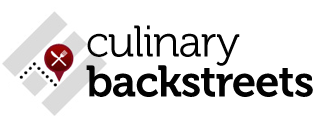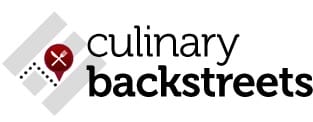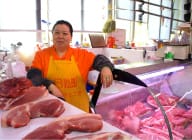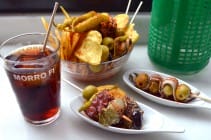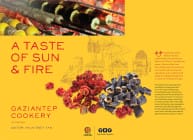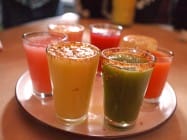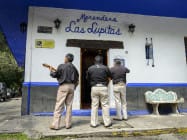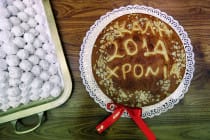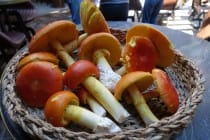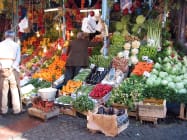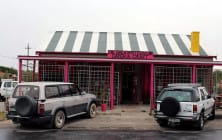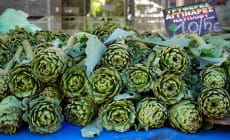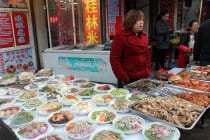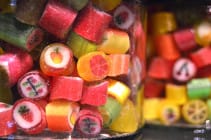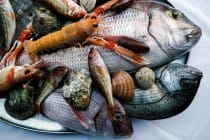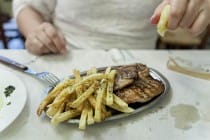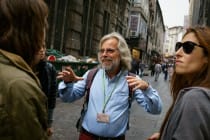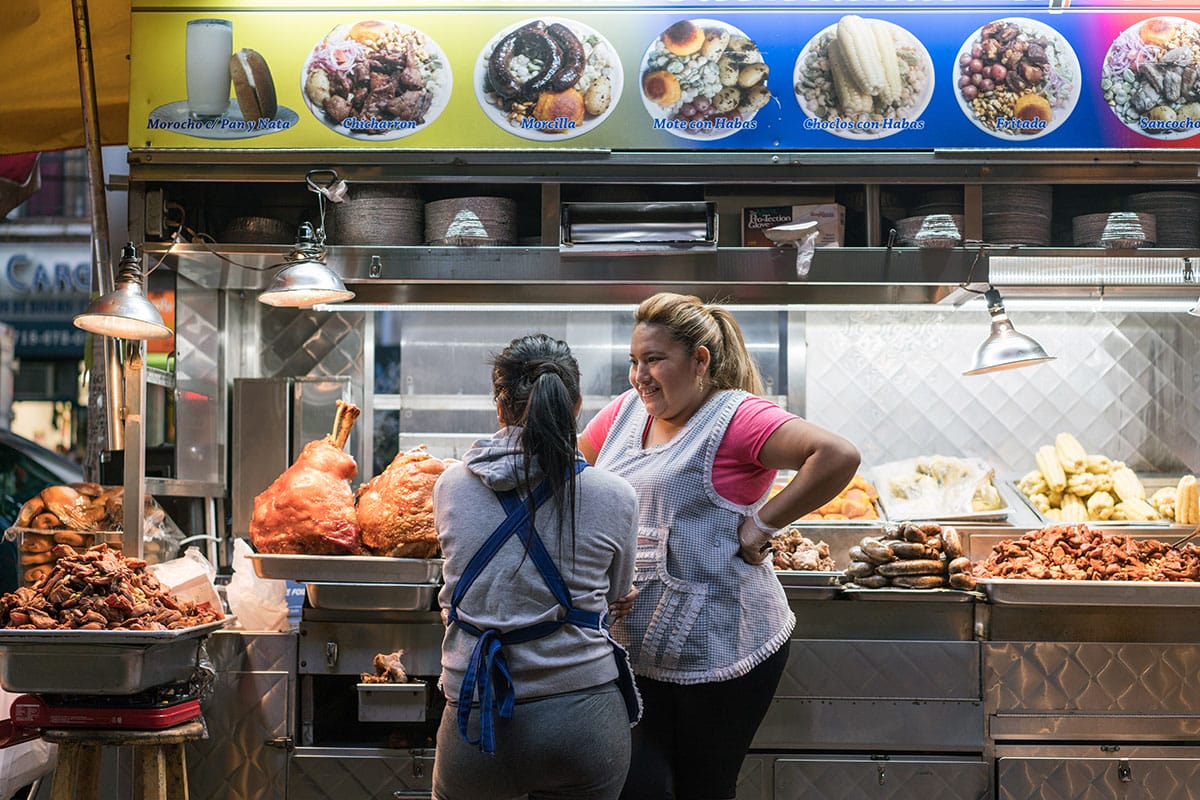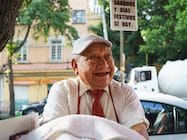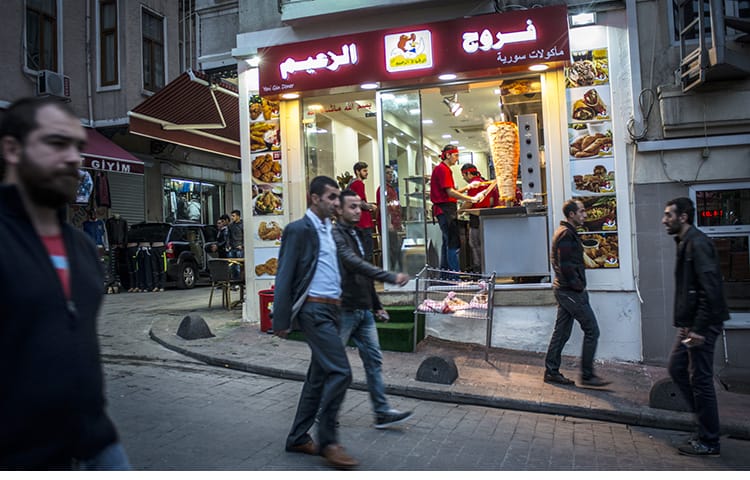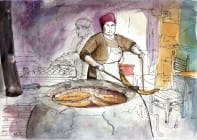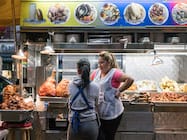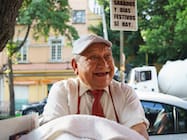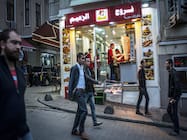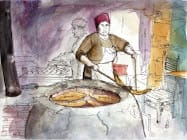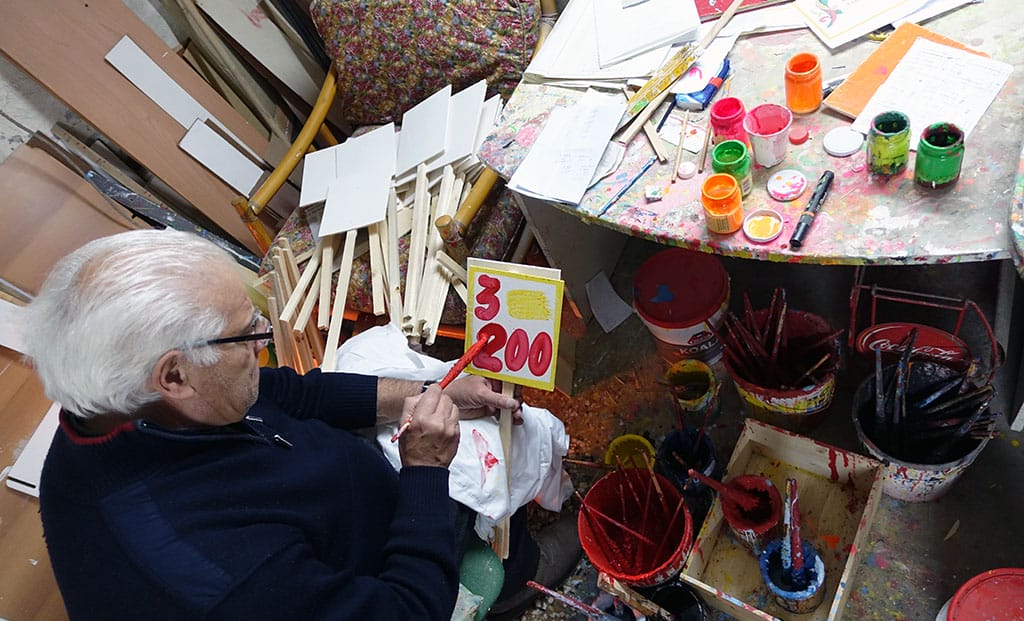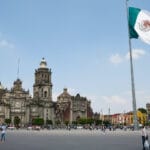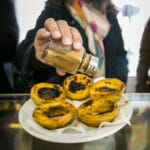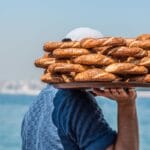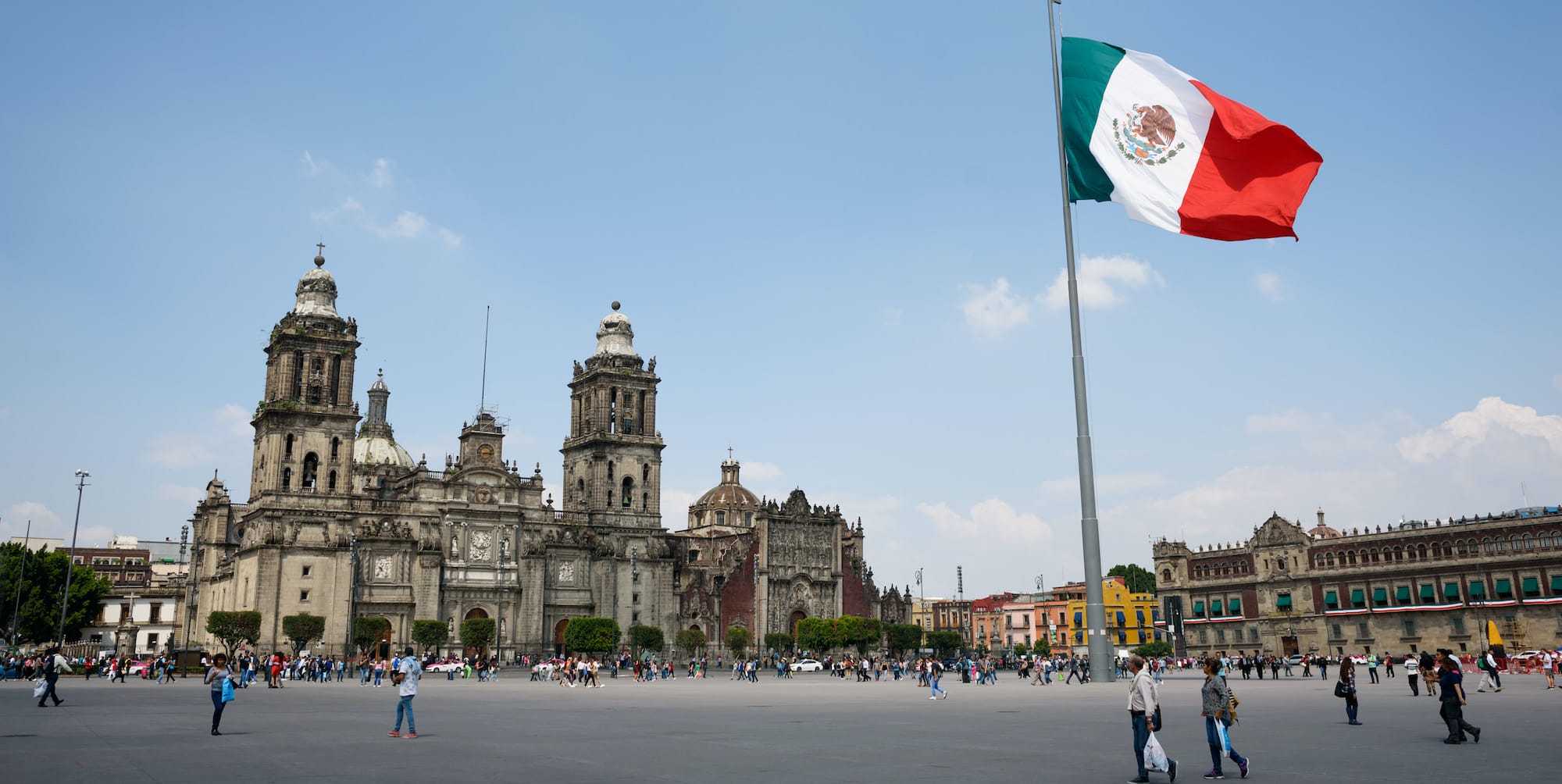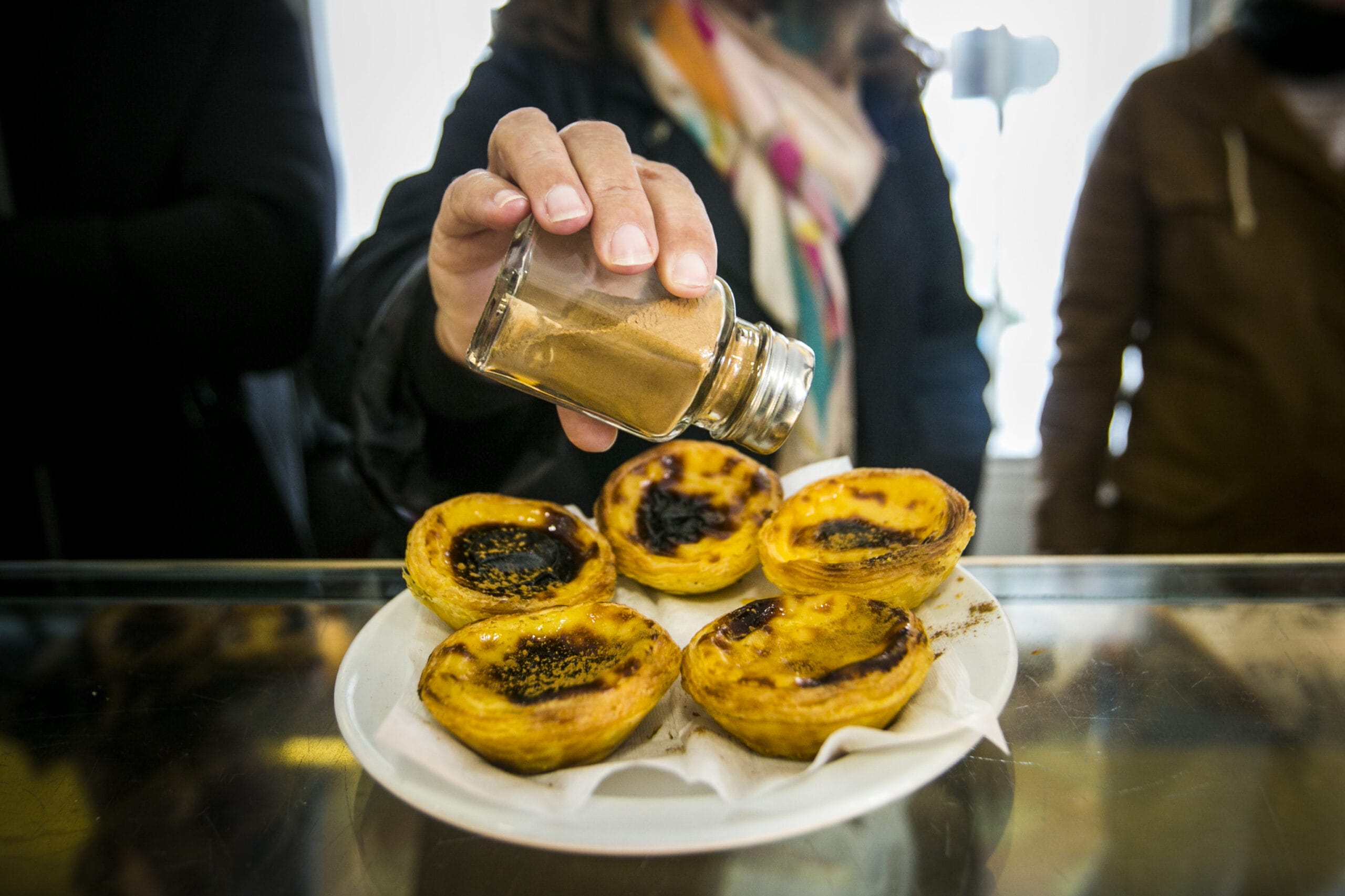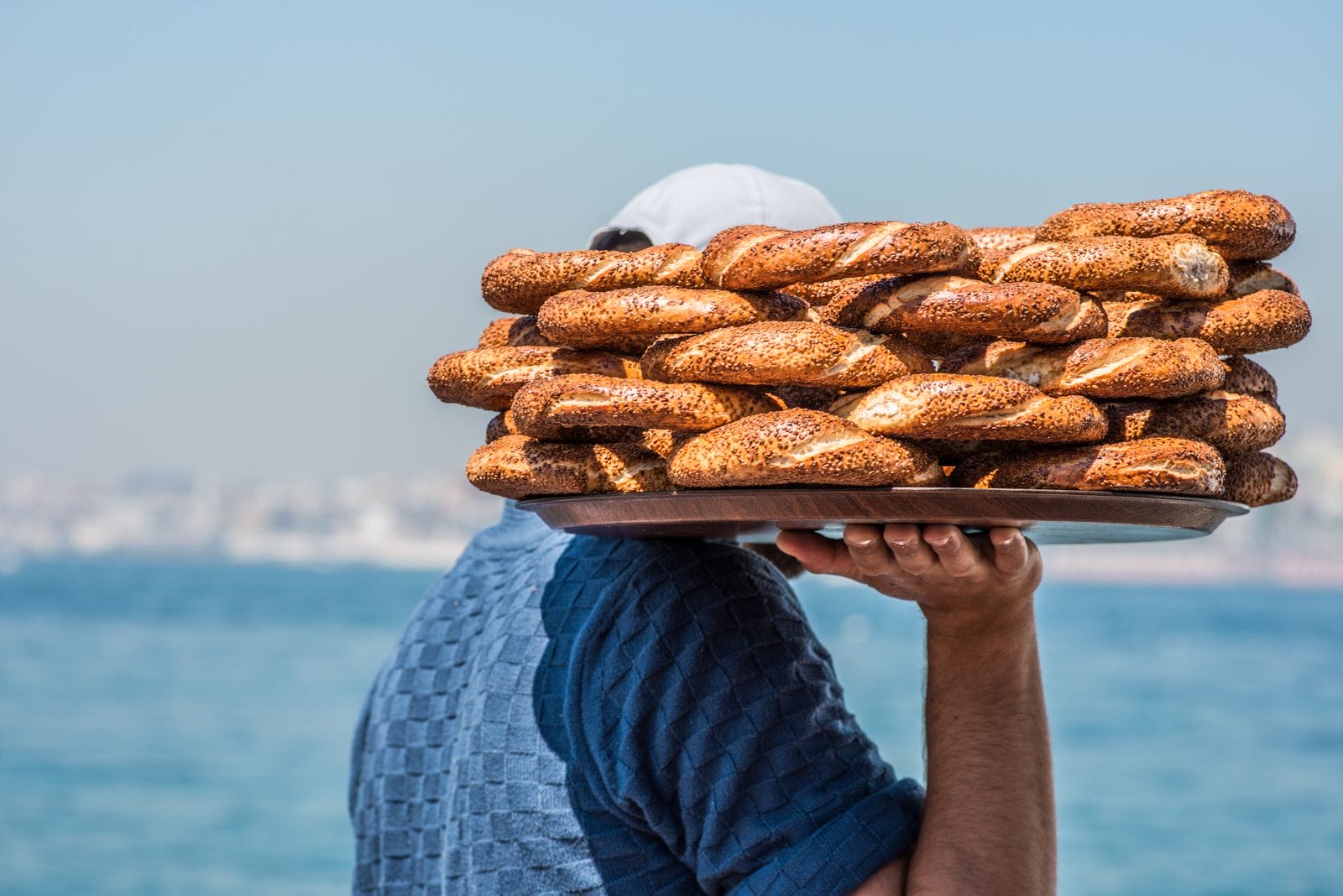His name is Pasquale De Stefano, but everyone knows him as Pasquale ‘o nummararo, “the number man.”
In this era of plotters and laser printers, De Stefano continues to hand-paint his signs, using ancient paintbrushes on wooden boards, which are then planted in the baskets of all Neapolitan fruit sellers. And even the wooden signposts are still cut by hand.
In 65 years of work he has by now created tens of thousands of signs advertising the prices of apples (€0.99) or peaches (3 kg for €2). They can be small or large, on canvas or on wood, promising a “special offer” or “great value.” Sometimes Pasquale’s signs will feature a more pointed message: “Whoever touches the fruit will be touched by the fruit seller,” is one that comes to mind.
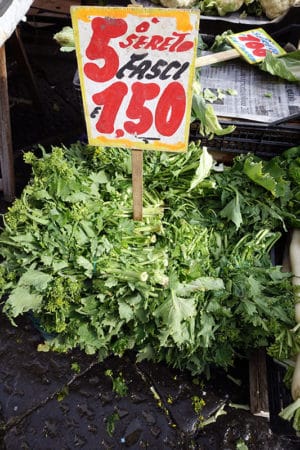 Throughout the city, from the markets of Antignano to Forcella, from the markets of Sant’Antonio Abate to Pignasecca, the signs are all the same, all made by the same hand.
Throughout the city, from the markets of Antignano to Forcella, from the markets of Sant’Antonio Abate to Pignasecca, the signs are all the same, all made by the same hand.
There are only two fonts: one big and fat (let’s call it “Napoli bold”) and one narrow and thin (“Pasquale narrow,” shall we say). And then there are just four colors: red for big price numerals; yellow for bright edges; black for small writing; blue because it always serves in a city coated with the color of Napoli football.
The last of eight brothers, all number men, the son of a number man, De Stefano is now the last guardian of very old knowledge that, after he’s gone, will be irretrievably lost. He has no children who have learned the art, no apprentices. After him … laser print!
Dozens of restaurants and pizzerias order signs to advertise their goods. All adore the naive graphics because they create an immediate connection to Neapolitan culture and recall to customers the quality and freshness of market products.
Even a publishing house, Nova Edizioni Culture, features De Stefano’s work on the covers of books related to the city of Naples.
But the number man is proudest of the signs that “won the first prize” during the celebrations of the Napoli football team’s first championship win. That was a historic moment for the city – May 10, 1987 – and Pasquale signs filled with funny phrases were all over the city.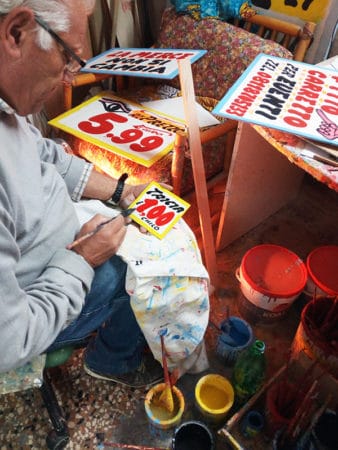
De Stefano has a tiny shop, in a dark alley called Vico Finale, in the maze of little streets around the Market of Sant’Antonio Abate. But just ask a fruit seller: where is Pasquale ‘o nummararo? If he’s not around making deliveries he’s there to paint. He welcomes everyone with a smile. He turns off the stove he uses to quickly dry the paints and shows you the tools of the trade.
If he has time can make a nice sign for you, with your name. A souvenir of Naples light years away from the usual magnets.
But be careful: he must write a price per kilo! Then you must ask yourself a little philosophical question: “Do I have a price?” Forget it – better just to write a date.
Published on June 26, 2017
Related stories
April 18, 2024
Trips-Page-TestMexico City has a complex and fascinating cultural identity: it is a place where pre-Hispanic, Colonial, and contemporary influences collide in a riot of street food, and bustling markets. Here, the Aztec ruins of the city aren’t just buried under the surface, they become a backdrop to a thriving, ever-changing metropolis, a microcosm of many…
April 4, 2024
LisbonQuick Bite: On this food tour in Lisbon, we’ll experience a cultural feast, tasting some of the most diverse bites of the city’s gastronomy and meeting the people behind them. The oldest city in Western Europe, once the hub of a trading empire that connected Macau in the east to Rio de Janeiro in the…
February 28, 2024
Food Tours NDQuick Bite: This full-day Istanbul market tour draws from our best-of list in the European side’s Karaköy neighborhood and the Asian Kadıköy, tied together by a Bosphorus crossing, visiting two markets on two continents. Our favorite Istanbul experiences include exploring the eateries in local markets and crossing the Bosphorus on the public ferry. The route for…

